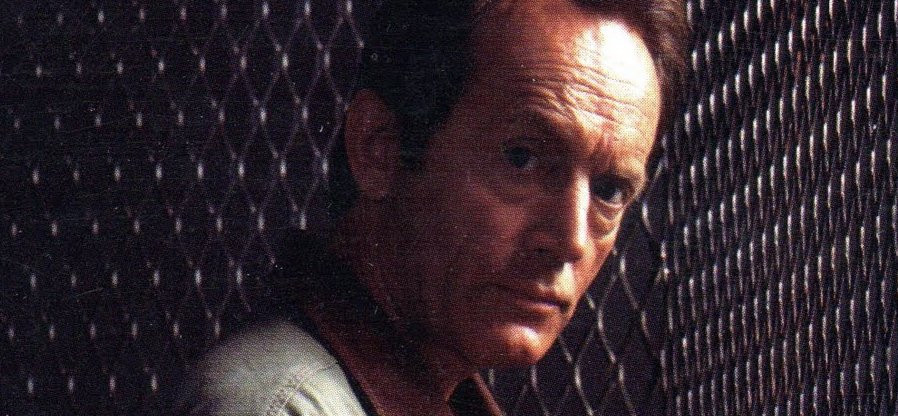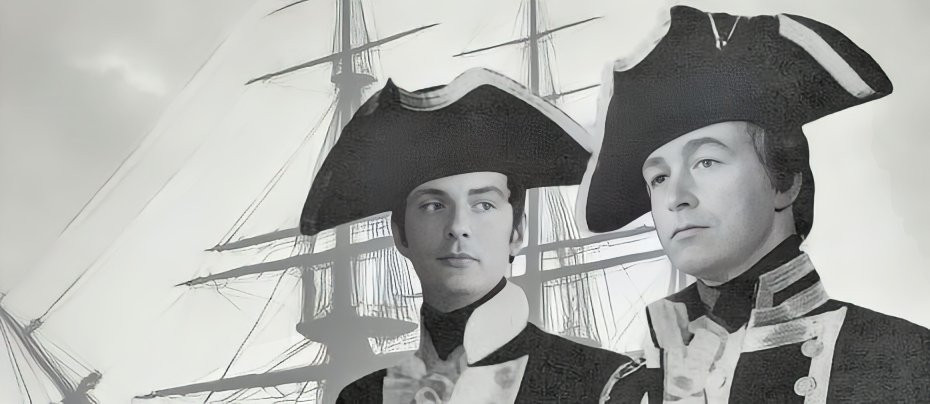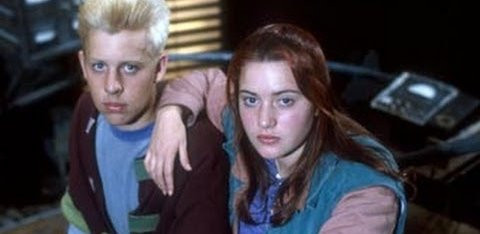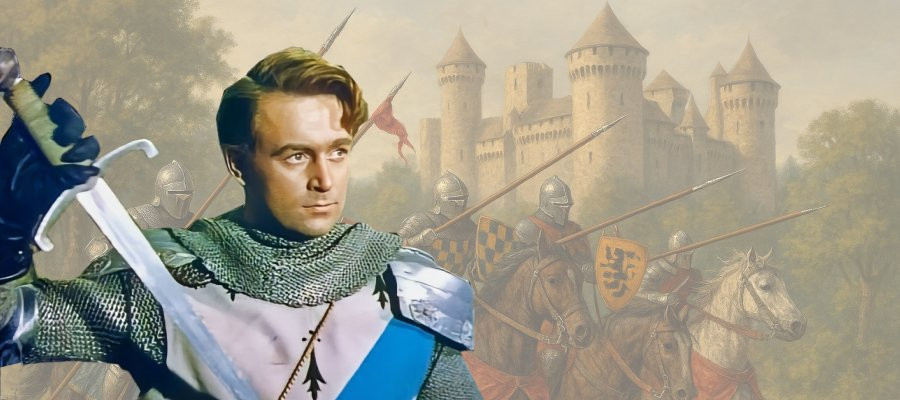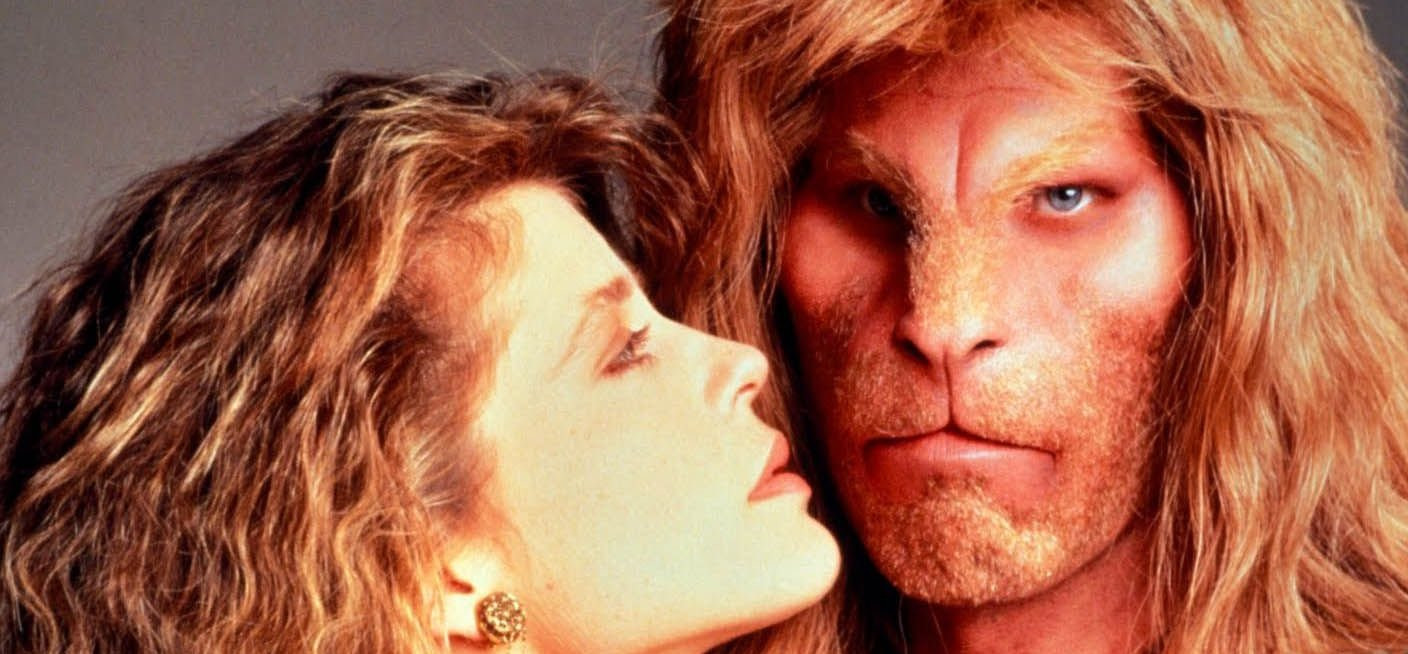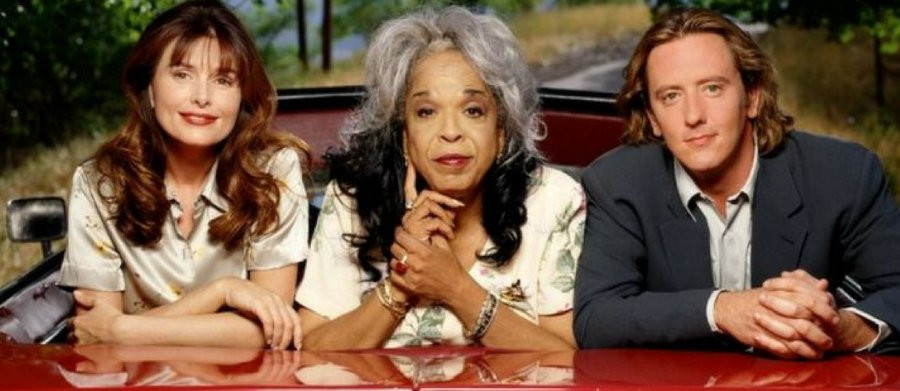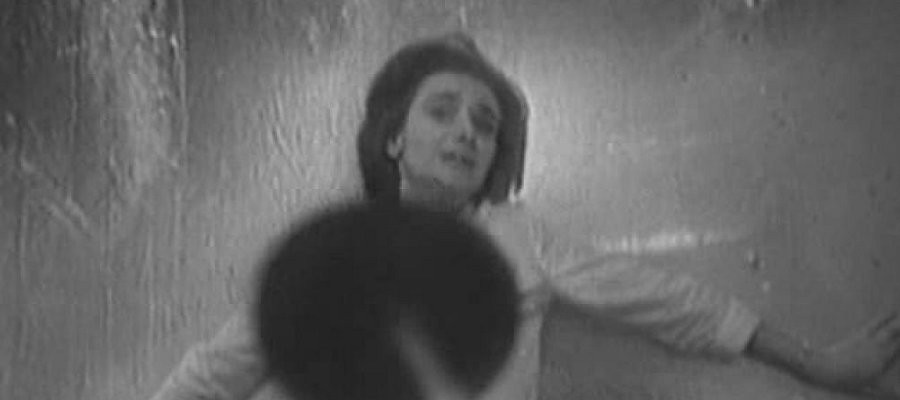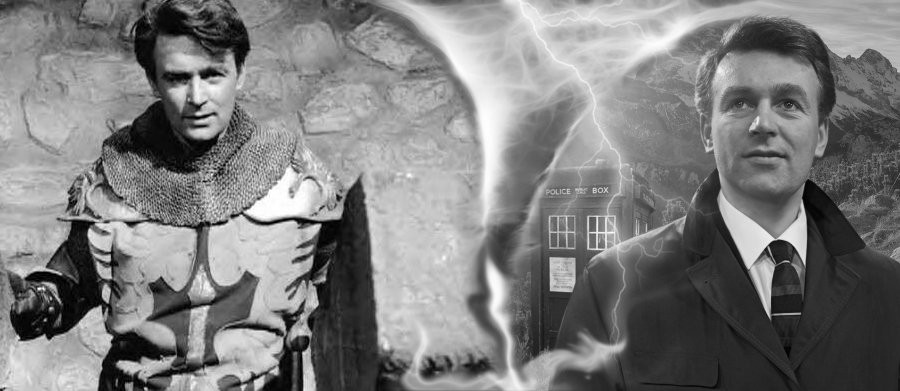
From Swashbuckling to Sci-fi - William Russell's Dual Roles
Andrew O’Day
Scholars have commonly written about the way Doctor Who began in 1963 as an example of Public Service Broadcasting educating the television viewer about different periods of history that the travellers would visit in their space and time machine while entertaining, as well as featuring futuristic science fiction serials. Matthew Kilburn, for instance, compares Doctor Who with Peter Watkins’ Culloden(1964) with both being attempts to find new ways of presenting history to a television audience and fulfil the BBC’s duty as a PSB broadcaster. I have also examined elsewhere the first season Doctor Who historical as being ‘historical fiction’ where history was dramatized in an entertaining way for the audience.
Various bloggers have noted connections between early 1960s Doctor Who and the previous ITV series The Adventures of Sir Lancelot (1956-57) and this is the approach I shall take examining the similarities between the characters of Ian Chesterton and Sir Lancelot, both played by William Russell, whether intended or not. William Russell featured in Doctor Who from the start until the serial ‘The Chase’ in 1965. This approach of comparing Doctor Who with what James Chapman calls the ‘costume adventure series’, illustrates how Doctor Who entertained as well as taught from the start and goes further than Chapman who simply notes that William Russell starred in both.
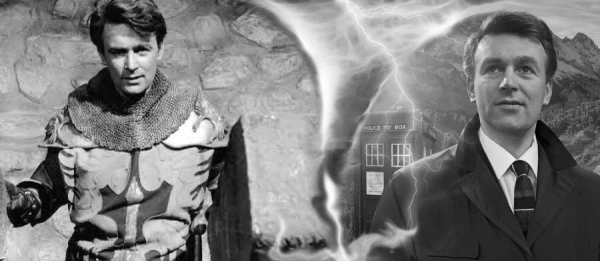
Blogger Andrew Rilstone states: ‘I rented the thing [ The Adventures of Sir Lancelot ] because I wanted to see William Russell in some other role than Ian Chesterton’. ‘But’, Rilstone continues, ‘I was disappointed. Sir Lancelot is in all respects the same character as Ian’. Rilstone notes that Sir Lancelot ‘has the same combination of self-effacing modesty and square-jawed resolution. His relationship with Merlin is precisely the same as Ian’s relationship with the first Doctor’. Moreover, Sir Lancelot is a hero and Ian is a liberal anti-tyrannical hero. There are indeed further connections between Sir Lancelot and Ian Chesterton.
The Doctor Who serial ‘The Aztecs’(1964) echoes The Adventures of Sir Lancelot with Ian Chesterton fighting the warrior Ixta on two occasions, firstly without a sword to prove his ability to command the Aztec forces and later in a swordfight with armour which sees Ian victorious and Ixta plummeting to his death from the temple roof. Fan Blenkinsopthebrave blogs ‘It was [sic] to watch William Russell fight nobly just as he did as Sir Lancelot on the TV serial ‘The Adventures of Sir Lancelot’ a few years earlier’. While the first of these fights echoes Shakespeare’s Hamlet and Laertes’ poisoned sword, with the Doctor unwittingly telling Ixta that he can defeat Ian by rendering him weak with the scratch of a poison nettle, there are also then parallels with the earlier swashbuckling series.
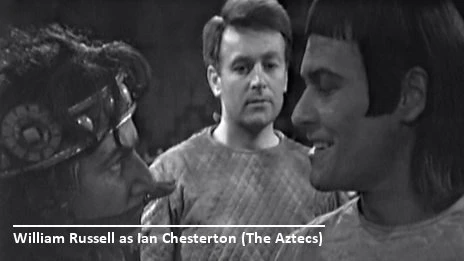
Again, Ian Chesterton’s actions in the Doctor Who serial ‘The Romans’ (1965) echo Sir Lancelot’s in the episode ‘Roman Wall’. It has commonly been stated that ‘The Romans’ with its sexual farce is indebted to Carry on Cleo (see a good summary of this, for instance, by Gillatt) but Jacob Edwards recently argues that the musical comedy A Funny Thing Happened on the Way to the Forum is a source. But while these are sources and while other films depict Roman gladiators, the hero Ian Chesterton is played by the same actor as Sir Lancelot. Ian is forced to fight to the death in the arena for the entertainment of the Emperor Nero, though managing to escape. ‘Roman Wall’was set in the Roman province of Britain which Sir Lancelot states he was unaware still existed. Sir Lancelot changes into Roman attire and lounges around drinking wine much as Ian Chesterton would do at the beginning of ‘The Romans’ Lancelot was tricked and, like Ian, was sentenced to fight to the death in the arena, wearing armour and brandishing a sword, for the spectacle of onlookers. This was because unlike in the case of Ian in Doctor Who, Sir Lancelot was caught trying to abduct King Bolton’s daughter, the princess Iolta, and because his statement that his wine had been poisoned was made to look like a lie when the bottle of wine was switched by the traitor. In that case, Lancelot was victorious against his opponent and the truth was revealed.
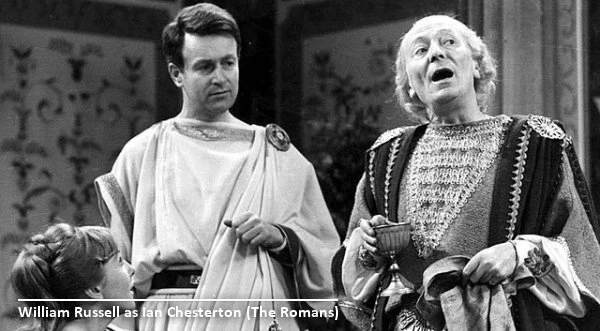
Indeed, the Doctor Who serial ‘The Romans’ also closely recalls The Adventures of Sir Lancelot episode ‘The Lesser Breed’ . In ‘The Romans’, Ian Chesterton is earlier sold as a slave and is forced, along with other slaves, to row a ship, experiencing horrendous treatment by the galley master with his whip. Ian and fellow slave Delos escape overboard, by taking the galley master’s key, when the ship is swamped by a storm. In ‘The Lesser Breed’, Sir Lancelot was sold but as a Viking slave in a different period of history, in this case after he had been forced to row a Viking ship through what became extremely rough waters. The earlier case differed since a father was to allow his daughter Sela to unwillingly be married in return for slaves and she assists Sir Lancelot and the other slaves to break free. This followed Sir Lancelot’s attempt to disguise himself and challenge the suitor to a duel for Sela’s hand in marriage.
The Doctor Who serial ‘The Crusade’(1965) is set in 12th century Palestine during the Third Crusade. In keeping with historical events, King Richard I intends for his sister Joanna to marry Saphadin but she refuses consent and Richard’s bid to secure peace through marriage fails. This serial echoes The Adventures of Sir Lancelot beginning with Ian Chesterton, as well as the Doctor, engaged in a swordfight with a couple of Saracen warriors and later King Richard makes Ian ‘Sir Ian, Knight of Jaffa’. Doctor Who could be advertising its source here or making plain what it thought William Russell’s acting persona was. In his search for Barbara, Ian is attacked by bandits before escaping and bringing about a rescue, illustrating how the serial fits in with adventure fiction.
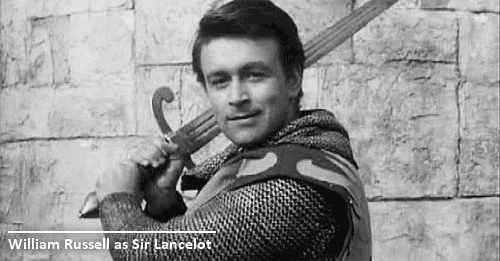
The first Dalek serial (1963-64), by Terry Nation, set on an alien world in the far future, echoes the episode ‘Shepherd’s War’ of The Adventures of Sir Lancelot. In the first Dalek serial, the travellers, the Doctor, Ian, Barbara and Susan, realise that the Fluid Link which operates the time and space machine, the TARDIS, has been left in the Dalek city and that in order to leave the planet Skaro they must recover it. They therefore need the Thals to help them enter the city. Ian Chesterton urges the Thals, led by Alydon, to fight the Daleks but Alydon refuses insisting that the Thals are pacifists. In response, Ian threatens to exchange a Alydon’s love interest, the Thal woman Dyoni, grabbing her as prisoner, for the travellers Fluid Link, at which point Alydon punches Ian to the ground. Ian makes his point by remarking that there is something the Thals would therefore fight for.
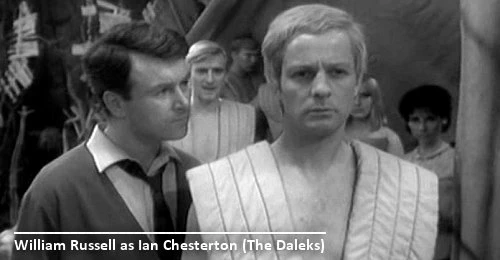
While a source for this is H.G. Wells’ The Time Machine [see this view echoed, for instance, on the DVD Production Notes], in the earlier episode ‘Shepherd’s War’ Sir Lancelot teaches the common people to fight and defend themselves. They question the point that one knight, Sir Lancelot, has been sent to help them to which Lancelot says that there would not always be a dozen knights to assist them and when they say that they are not warriors who raise arms against fellow men Sir Lancelot helps them realise that it is not impossible to fight back. However, unlike in the Dalek serial, Lancelot did not provoke the common people to fight.
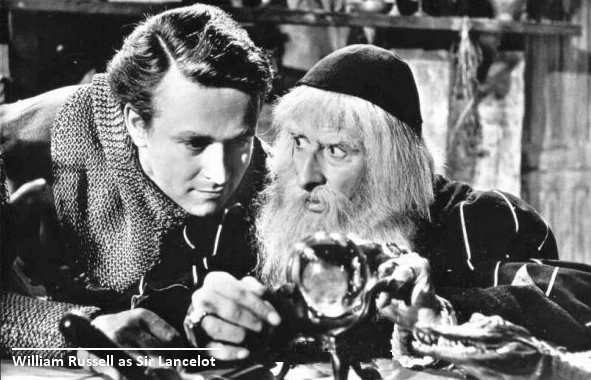
There are evidently, then, connections, deliberate or not, between the roles of Ian Chesterton and Sir Lancelot, with both programmes falling into the genre of adventure fiction as well as Doctor Who participating in the genres of science fiction and history. There are further parallels between the two such as where there is a sword fight between Marco Polo and Tegana in ‘Marco Polo’ (1964) and where Ian Chesterton is put in a position that was not accorded to Sir Lancelot. For example, Ian being scratched with a poisoned thorn to render him weak in battle in ‘The Aztecs’ not only recalls Hamlet but also a knight being deliberately blinded by the reflection of the sun in ‘Knights Choice’ with Tlotoxl and Morgana (based on Morgane Le Fay from, for instance, Sir Thomas Malory) as villainous figures, and where the eclipse in ‘The Aztecs’ also recalls the eventual eclipse in that earlier episode. But in looking at the parallels between the two characters played by William Russell this article has extended the work of bloggers.
I’d like to thank Tim Harris, Richard Harris, Professor Jonathan Bignell, Dr Matthew Kilburn, Dr Anjili Babbar, Amy Reiswig and Anthony Granato for long-lasting friendship and encouragement while writing this article.
References
Inside the TARDIS: The Worlds of Doctor Who by James Chapman, I.B. Tauris, 2006, Swashbucklers: The Costume Adventure Series by James Chapman, Manchester University Press, 2015, Doctor Who From A To Z by Gary Gillatt, BBC Books, 1998, The Black Archive 32 The Romans by Jacob Edwards, Obverse Books, 2019, ‘Bargains of necessity?: Doctor Who, Cullodenand fictionalising history at the BBC in the 1960s’ by Matthew Kilburn in Time And Relative Dissertations In Space , edited by David Butler, Manchester University Press, 2007, ‘History and Fiction in John Lucarotti’s first season Doctor Who narratives’ by Andrew O’Day, www.hrvt.org/andrewoday/historyfiction.htm‘Guilty Pleasures: The Life and Opinions of Andrew Rilstone’ at www.andrewrilstone.com
About Andrew O'Day
Andrew O'Day is a published author with a BA in English Literature, a Masters in Theatre Studies and a Ph.D in Television Studies.
Andrew is currently Executive Producer for Baby Dog Films' 'Once a Year on Blackpool Sands' and 'Beautiful Monster.'
His website can be found at https://www.hrvt.org/andrewoday/index.htm
Published on June 25th, 2020. Written by Andrew O'Day for Television Heaven.


